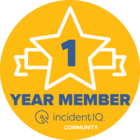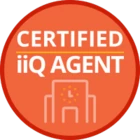We have Assets Lite not the full version of Assets. What can I not do that I can if we had the full Assets?
Solved
Assets Lite vs Assets. What is the difference?
 +1
+1Best answer by RWallace 1003c91 smithville
My rep also sent me this. I didn’t realize interactive maps wasn’t in Assets lite.
Included in Assets Lite
- MDM Integrations
- With Assets Lite, we still maintain full integration with all supported MDMs (Mobile Device Management systems). This means that device profiles within Incident IQ will continue to include MDM-specific fields and device actions, allowing users to perform key remote management tasks directly from the platform.
- Asset Reporting
- With Assets Lite, districts still have access to the Asset Explorer page, allowing them to view and manage assets within the system. Additionally, users can create custom views to filter and organize asset data based on specific criteria.
- Asset Imports
- With Assets Lite, districts can still leverage our import functionality to track devices that are not managed within an MDM. This allows them to manually upload and maintain records for assets such as peripherals, non-networked hardware, and other equipment that may not be integrated with an MDM.
- Limited Check in/out capabilities
- With Assets Lite, districts still have the ability to perform device check-in/check-out for individual assets. However, the batch check-in functionality is not included. This means that while users can check devices in and out on a one-off basis, managing large-scale deployments or returns efficiently would require the full Assets module. For districts needing streamlined bulk check-in processes—such as end-of-year device collection or mass deployments—upgrading to the full Assets module would be necessary.
- Asset Profiles
- With Assets Lite, districts still have access to asset profiles, but with a more limited set of features compared to the full Assets module. Specifically, the only tabs available at the top of an asset profile in Assets Lite are the Asset Details and Timeline tabs.
- Associating Assets with Tickets
- Since Assets Lite still allows for asset tracking, districts can continue to associate assets with tickets just as they would in the full Assets module. This ensures that technicians and administrators can link devices to support requests, providing context for troubleshooting and service history.
Not included in Assets Lite
- No Asset Rules
- One of the major advantages of the full Assets module is the ability to instantly update the Google Admin Console (GAC) through the rules engine. This means that when a Chromebook is assigned to a student, our platform can automatically move the device into the correct Organizational Unit (OU) within GAC—ensuring seamless device management and policy enforcement. However, with Assets Lite, this instant synchronization is not possible because districts do not have access to asset rules. This means any necessary updates to GAC OUs would need to be performed manually, making large-scale device deployments and reassignments more time-consuming compared to districts using the full Assets module.
- No Audit Manager
- The Audit Manager tool is a powerful feature within the full Assets module that allows districts to create and enforce audit policies to track device status and compliance. With this tool, districts can easily generate reports to determine which devices are in good standing and which require attention—helping IT teams maintain accountability and ensure devices are properly managed.
- No Batch Check in / Check out
- Batch Check-In/Check-Out is a critical feature for districts managing large-scale device deployments and collections, allowing IT teams to efficiently process thousands of devices in a short period. This capability is exclusive to the full Assets module and provides a streamlined workflow for quickly issuing or retrieving student and staff devices.
- No Rapid Scan
- The Rapid Scan functionality is another key feature exclusive to the full Assets module, providing districts with a fast and efficient way to scan and process multiple devices in seconds. This is especially useful for tasks like batch check-in/check-out, inventory audits, quick device lookups, and bulk actions.
- With Assets Lite, districts do not have access to Rapid Scan, meaning all asset interactions must be done manually, one at a time. This can significantly slow down workflows, especially during high-volume device deployments, returns, or audits. For IT teams looking to maximize efficiency and reduce processing time, Rapid Scan is a major value proposition of the full Assets module.
- No Spare Pool Manager
- The spare pool manager is only available with the purchase of the assets module.
- No Interactive Maps
- Districts are not able to access our interactive mapping tool without the purchase of the assets module.
- No Cost Tracking
- The cost tracking tab on an asset profile as well on the assets explorer page are only available with the purchase of the assets module.
Enter your E-mail address. We'll send you an e-mail with instructions to reset your password.


